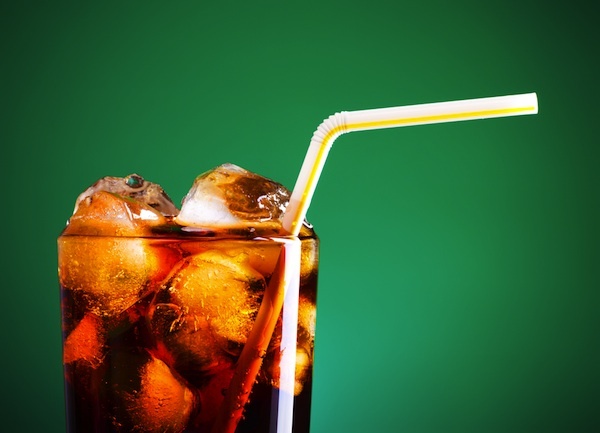Polar Bear Video Shows Dark Side of Drinking Soda — Will It Change Habits?

A new video featuring a family of polar bears falling ill after too much soda might counter happy soda ads, but may fall short of getting people to cut the sugary stuff, experts say.
In the online video, the bears start off happily guzzling bottles of caramel-colored soda. However, the beasts soon suffer health problems, including weight gain, tooth decay, erectile dysfunction and limb amputation — a complication of diabetes. The ad finishes with the family dumping their drinks into the ocean.
The video’s dark message offers a sharp contrast to some advertising messages from the soda industry, particularly the "open happiness" campaign from Coca-Cola. The soda giant has also featured iconic polar bears in its ads for decades.
"Their ads show a happy-go-lucky spirit as their polar bears guzzle Coca-Cola, and we thought another view was necessary," said George Hacker, senior policy adviser for health promotion at the Center for Science in the Public Interest, the advocacy organization behind the video.
In the video, images of the bears are interspersed with facts tying soda consumption to obesity, such as "An extra sugary drink each day increases a child's risk of obesity by 60 percent."
While outside experts said they support the video's message, they also said it's uncertain whether the campaign will actually get people to put down their sugary drinks.
"I think [the video makers] should be applauded for what they are trying to accomplish," said Timothy Edgar, director of the graduate health communication program at Emerson College in Boston. However, the video fails to provide viewers with ways to kick the habit, never admitting that quitting will be tough, Edgar said.
Sign up for the Live Science daily newsletter now
Get the world’s most fascinating discoveries delivered straight to your inbox.
While the tune playing in the video, a song called "Sugar" written by Jason Mraz specifically for the campaign, seems to acknowledge the love people have for soda, the bears appear to have no trouble giving it up. "Clearly people love their soda, and [quitting is] not going to be something easy to do," Edgar said. [See 4 Tips for Kicking Your Soda Habit.]
In addition, the cartoonish characterization of some of the consequences of obesity may make it hard for viewers to relate, Edgar said. For instance, the father bear's paw is amputated by a fox with a chainsaw.
"I'm not sure that’s going to feel very real," Edgar said. "Are you going to be able to connect to that, and see that as a very real risk to your life, when it's portrayed in a cartoonish way?" he said.
Nancy Copperman, director of public health initiatives at the North Shore-Long Island Jewish Health System in Great Neck, N.Y., said the amputation scene was a bit much.
"My gut reaction was that having cute polar bears have their legs sawed off was a bit, in a way, disturbing," Copperman said. The video made the amputation appear as "a fantasy," or a satire, and not real, Copperman said.
Although the cartoons might appeal to children, who are also frequent consumers of soda, the video’s messages would likely go over younger viewers’ heads, experts said.
The mention of rather far-off consequences of obesity, such as erectile dysfunction, would not be relatable for kids. "They're not going to be able to connect to that," Edgar said.
Hacker said the video was intended to make people think, and not necessarily change lifestyles.
"Our principle objective with the video is to start people talking about some of the unhappiness associated with excessive soda consumption in this country," Hacker said. "It's not solely intended as an effort to change their behavior.”
Hacker said the video is aimed at people in their teens and older, specifically those who are social media savvy.
Although this particular video did not target children, Copperman said it is important to educate kids about the influences of adverting, because kids are also the target of soda marketing campaigns.
"You need to think of a way to do it in a way that they would understand," Copperman said.
Pass it on: A new public health campaign video featuring soda-drinking polar bears is well intended, but may not lead to behavior change.
This story was provided by MyHealthNewsDaily, a sister site to Live Science. Follow Rachael Rettner on Twitter @RachaelRettner, or MyHealthNewsDaily @MyHealth_MHND. We're also on Facebook & Google+.

Rachael is a Live Science contributor, and was a former channel editor and senior writer for Live Science between 2010 and 2022. She has a master's degree in journalism from New York University's Science, Health and Environmental Reporting Program. She also holds a B.S. in molecular biology and an M.S. in biology from the University of California, San Diego. Her work has appeared in Scienceline, The Washington Post and Scientific American.









